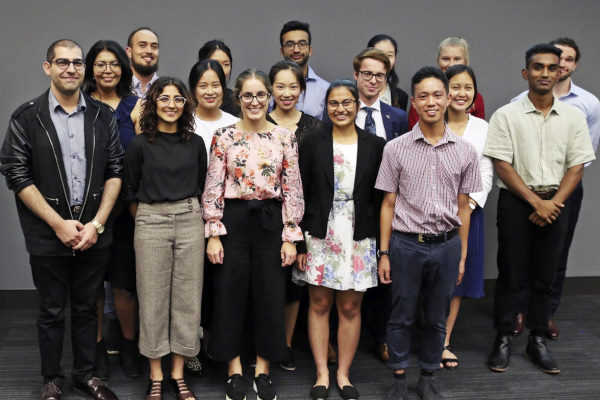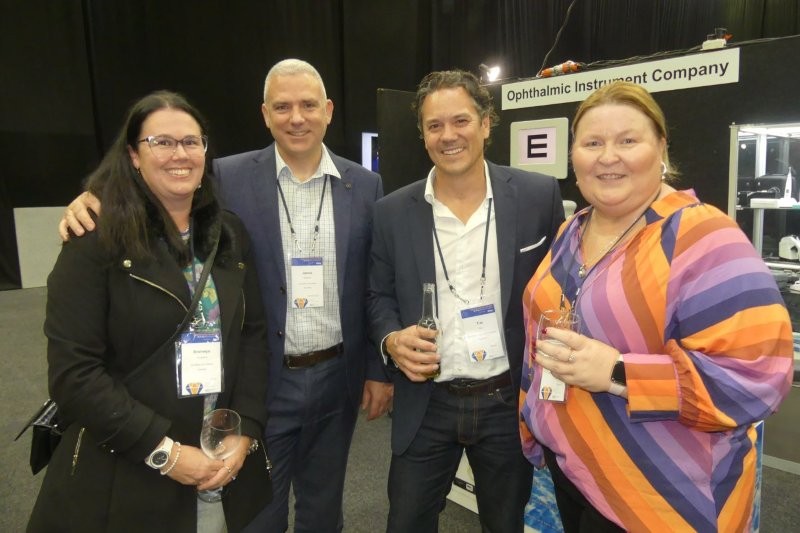Summer Scholar Symposium 2019
The Summer Scholar Symposium is an opportunity to recognise students who chose to undertake some real research projects within the Faculty of Medical and Health Sciences (FMHS) at the University of Auckland during their summer break.
This year featured a total of 17 students from the ophthalmology department, the School of Optometry and Vision Science and the Molecular Vision Laboratory who each presented their projects. The biggest task of the night? Cramming 10 weeks of work into a strictly policed four-minute presentation.
Fortunately, all the relatively still-novice presenters were well rehearsed and finished on or just under the time limit and also demonstrated their ability to think on their feet in response to audience questions. What fantastic training for future clinicians and academics! However, this exercise had my poor old brain swimming in an increasingly viscous solution of factual overload, while my eyes rotated with cyclotorsion in admiration for our students’ talent.
3D bandage for corneal wounds
The judges, Professor Bridget Kool, associate dean (academic) and Professor Andrew Shelling, associate dean (research) from FMHS, awarded first prize to Mehek Dutta a second-year optometry student for her research into creating a 3D-printed bandage suitable for applying to corneal wound healing. This employed a hydrogel material, similar to that used in the manufacture of contact lenses, with a cross-linking technique.
After incubating for seven days, human cells were placed on top of the 3D-printed structure and the rate of proliferation measured under different conditions. Results showed low levels of blue light made the cells “happiest” and most proliferative. Dutta also reported on a separate part of the study which looked at the most ideal storage conditions for this new bandage technology, which is important given the commercial interest in this project.
Atropine for myopia
Second prize was claimed by Muthana Noori who spent his summer studying the localisation of atropine in chicken eyes using MALDI (matrix-assisted laser deabsorption/ionisation) and mass-spectrometer imaging to pick-up the heat energy emitted, to understand more about how atropine works to inhibit the progression of myopia.
Noori showed atropine was detected with high precision in the cornea, iris and, particularly, on the inner retinal layers and choroid, where a significant amount more was detected than in the anterior structures. This leads to the postulation that since myopia progression is often the result of a lengthening of the eye, atropine may work by binding to receptors that alter or reduce this process.
Study tissue was exposed to atropine in incubation to ensure all the tissue was exposed simultaneously and for the same amount of time which, of course, is different to atropine drop use in live human eyes, but nevertheless the research revealed some interesting findings.
Regulating glutathione
The judges awarded third prize to third-year BSc student Pebble Varela for her work on the role of circadian clocks in glutathione regulation, depletion of which has implications for the formation of cataracts in the human lens.
Glutathione aids in antioxidative defence and BMAL1 proteins, known to be found in the lens, have been shown to be sensitive to circadian rhythm. Is there potential to harness circadian rhythms as an endogenous mechanism for prevention of cataract formation? Varela reported her study showed BMAL1 expression does not appear to change at different times over a 24-hour period, but the lens may contain a circadian clock that can determine antioxidant levels.
Other highlights
A prize for the most amusing presentation of the evening should go to Nikita Noord, who showed that females produce more limbal stem cells than males and female stem cells repel male stem cells. Male cells will interact with male cells but move away from the advance of female cells – food for thought at donor selection!
Most of the summer school scholars’ projects were funded by the University of Auckland with additional project support from the Tom Cat Trust, the NZAO, Retina NZ and the Paul Dunlop Memorial Research Scholarship. Paul Dunlop was a stalwart of optometry who was lost to us in the Christchurch earthquake as he was working on restoring one of New Zealand's oldest and smallest pipe organs. It was particularly fitting then that the recipient of this year’s Paul Dunlop memorial scholarship was Linda Zhou, who presented on orientation dependent amblyopic suppression; amblyopia being a topic Dunlop had a special interest in.
Naomi Meltzer is an Auckland-based optometrist, specialising in low vision consultation and support.


























